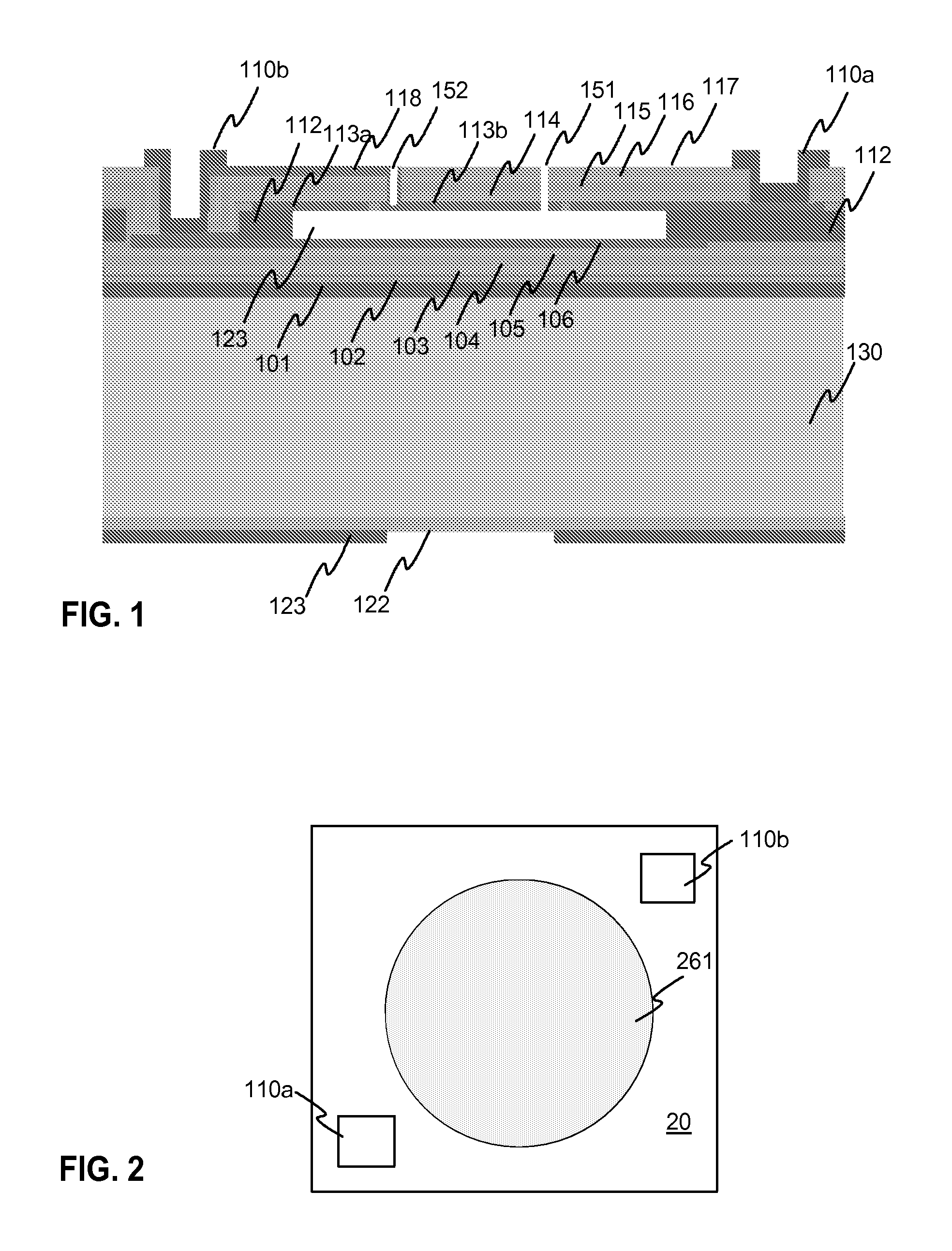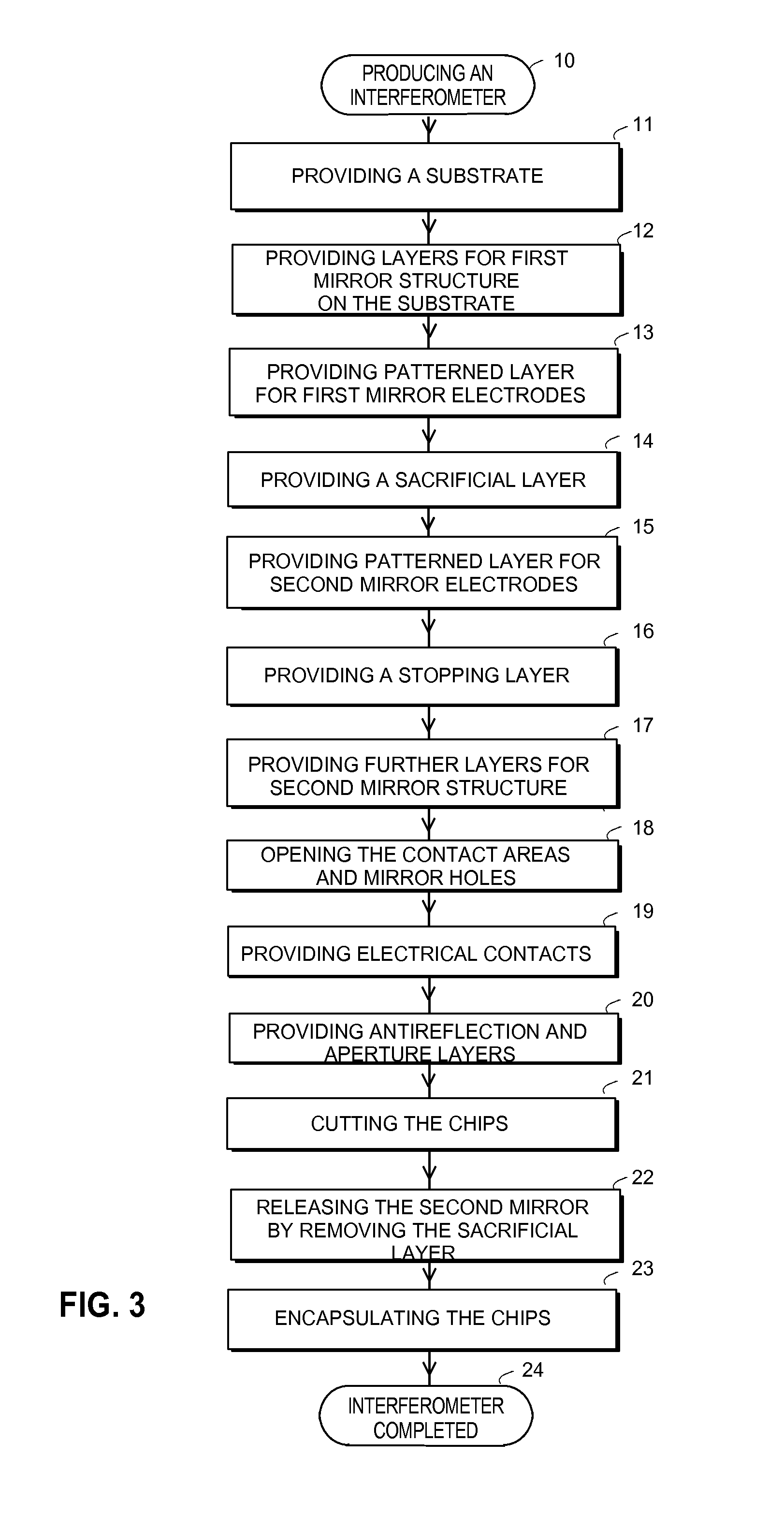Micromechanical tunable Fabry-Perot interferometer, an intermediate product, and a method for producing the same
a technology of fabryperot interferometer and micromechanical tunable fabryperot, which is applied in the direction of instruments, optical elements, optics, etc., can solve the problems of mirror performance degradation mirror edge etching, etc., to improve the etching process, and increase the density of pinholes
- Summary
- Abstract
- Description
- Claims
- Application Information
AI Technical Summary
Benefits of technology
Problems solved by technology
Method used
Image
Examples
Embodiment Construction
[0040]FIG. 1 illustrates a cross section of an exemplary Fabry-Perot interferometer according to the invention. The interferometer has a substrate 130 of e.g. monocrystalline silicon material, on which there is an optical matching layer 101 of e.g. silicon oxide. The reflecting layers of the fixed mirror are provided by layers 102-105, wherein layers 102 and 104 are of polycrystalline silicon, and layers 103 and 105 are of silicon-rich silicon nitride. Patterned layer 106 is made of doped polycrystalline silicon and serves as a control electrode of the fixed mirror.
[0041]The interferometer has a second, movable mirror which has reflecting layers 114-117. Layers 115 and 117 are of polycrystalline silicon, and layers 114 and 116 are of silicon-rich silicon nitride. Layer 113a, 113b is made of doped polycrystalline silicon and serves as electrically conducting control electrodes of the fixed mirror.
[0042]The electrode 106 of the lower, fixed mirror is electrically connected to the conn...
PUM
 Login to View More
Login to View More Abstract
Description
Claims
Application Information
 Login to View More
Login to View More - R&D
- Intellectual Property
- Life Sciences
- Materials
- Tech Scout
- Unparalleled Data Quality
- Higher Quality Content
- 60% Fewer Hallucinations
Browse by: Latest US Patents, China's latest patents, Technical Efficacy Thesaurus, Application Domain, Technology Topic, Popular Technical Reports.
© 2025 PatSnap. All rights reserved.Legal|Privacy policy|Modern Slavery Act Transparency Statement|Sitemap|About US| Contact US: help@patsnap.com



